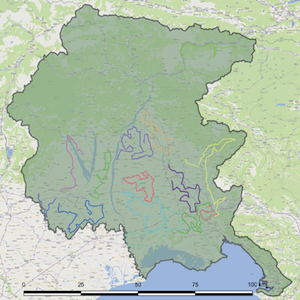Analysis of the Rook (Corvus frugilegus) wintering population in the Friuli Venezia Giulia region (Italy) using maximum entropy models

All claims expressed in this article are solely those of the authors and do not necessarily represent those of their affiliated organizations, or those of the publisher, the editors and the reviewers. Any product that may be evaluated in this article or claim that may be made by its manufacturer is not guaranteed or endorsed by the publisher.
Accepted: 21 June 2022
Authors
This research analyzed the wintering population of rooks (Corvus frugilegus) in the Friuli Venezia Giulia region (Italy) from 2010 to 2020. The goal was to determine the population size, trend, and distribution over the decade by assessing census data and evaluating the study area’s environmental suitability. It was important to identify the relationship between the region’s environmental characteristics and the presence of the species by developing territory suitability models, processed using the maximum entropy algorithms and MaxEnt (maximum entropy) software. It was possible to determine the combinations of the factors potentially influencing habitat attendance, to develop environmental suitability maps, and to identify the area with the greater probability of the presence of the species, as well as those areas with potential suitability. Data for the presence of wintering rooks were derived from annual censuses, carried out by direct observation along pre-established transects in the Friuli Venezia Giulia region. Based on the census data, that total number of rooks in Friuli Venezia Giulia across the 10-year period had a maximum peak recorded in 2015 (1543) and a minimum in 2019 (853). The distribution of the species was concentrated in the central-southern areas of the region, with greater turnout in the areas characterized by agricultural land use, while the mountainous areas, located in the southern part of the region, were excluded. The environmental suitability models developed with MaxEnt on a regional scale demonstrated excellent predictive capacity, validating the species’ ecological needs. Although the rook is not an endangered species, its range has been drastically reduced in Italy, at least in the last century, and MaxEnt could be used in the future as a management tool in order to outline conservation actions for the species, especially for its habitats.
How to Cite

This work is licensed under a Creative Commons Attribution-NonCommercial 4.0 International License.







